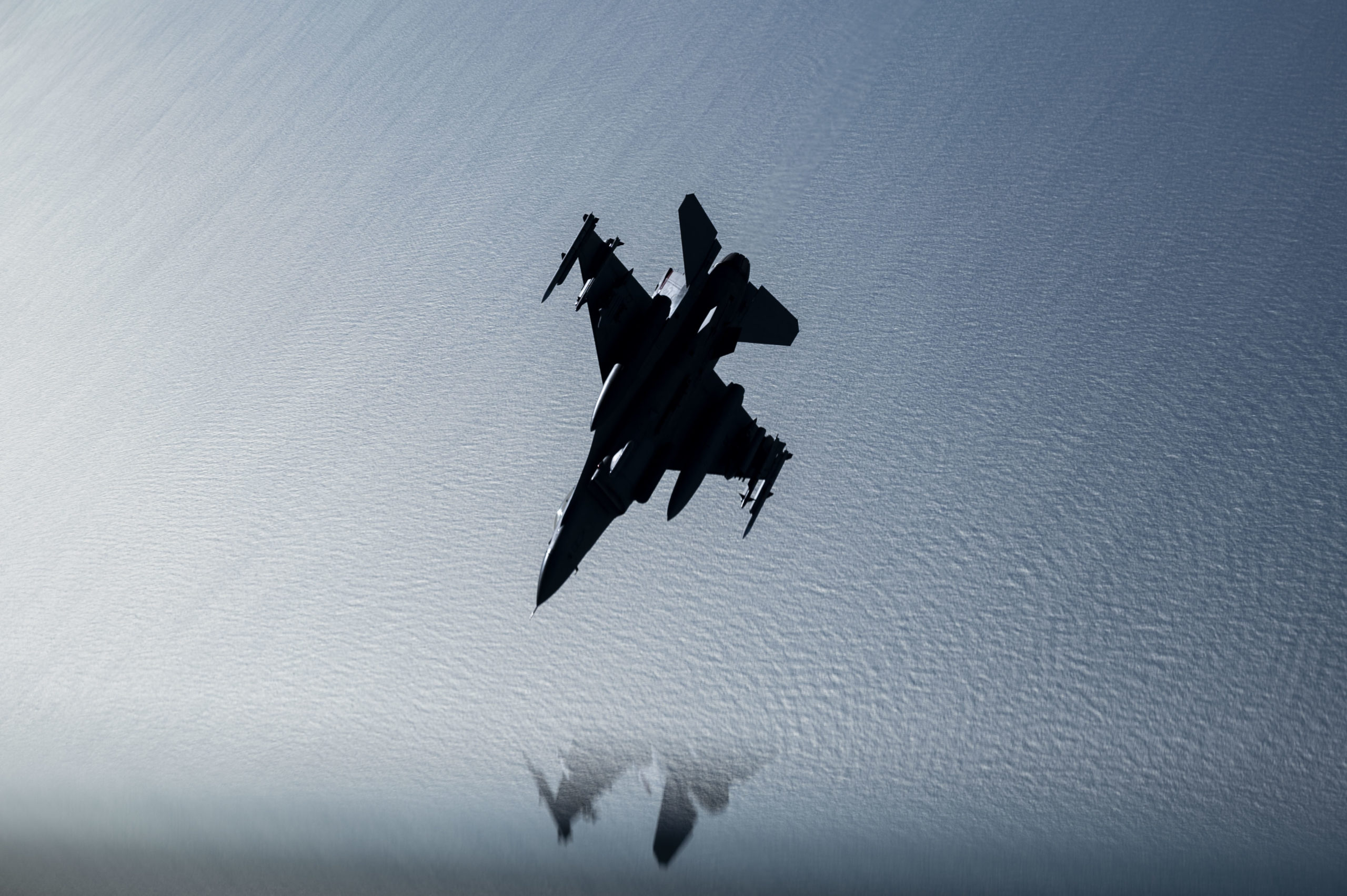Enhancing the Ready Force: Providing the Optimal Mix to Deliver the Desired Combat Effect
Sustaining and equipping the ready force in dynamically changing operational conditions is a major challenge facing the ADF and those of its allies.
A critical metric for evaluating approaches for how to deliver a cost desired effect is simply comparing the use of force packages or what I prefer to call the combat clusters up against the effect you wish to create.
My most recent book entitled A Paradigm Shift in Maritime Operations focuses on how to create distributed maritime effects without over reliance on capital ships by leveraging new technology options or reshaped or redesigned ones with legacy systems.
Several speakers at the seminar highlighted the example of the U.S. Navy expending high-cost ordinance against an enemy using cheap weapons. This is a force exchange ratio that if used against a peer competitor would have disastrous results.
It should be noted that the U.S. forces certainly got the point and what was not mentioned at the seminar is how the defeat strategy evolved for the Houthi weapons. In terms of tactical employment, the USAF came up with a good way to defeat cheaper weapons with an approach of their own.
As Brian Morra noted in an interview I did with him:
Recently I talked with my colleague Brian Morra, who served in the USAF and worked in defense industry for several decades. We discussed the challenge of how to enhance “the fight to night one force” in the short to mid-term.
He started by citing an example which highlights how the force can leverage its C2 and ISR advantages mentioned earlier by Secretary Wynne to shape new con-ops. The case is of the USAF working with the U.S. Navy in ship defense – both combat and commercial – against the Houthis in the Middle East.
As he noted, the Houthis have been using a wide range of strike capabilities against shipping. The dilemma of using high-cost weapons to defend against much cheaper projectiles has been a key problem.
The USAF came up with a con-ops innovation to deal with the problem. F-16s operating in the Middle East have been using their LITENING targeting pods to identify targets and to kill or degrade those targets using laser guided weapons hitherto used in air to ground operations. The aircraft can carry weapons for higher value targets but have used a much lower priced weapon to kill many of the Houthi’s projectiles.
This kind of thinking – leveraging core advantages but empowering the force with a much larger weapons arsenal of lower cost weapons – is clearly one example of the way ahead.

Chris McInnes, Executive Director of the Air Power Institute, provided a way to think about this problem of crafting a cost-effective approach to the use of resources. And such an approach I would add requires thinking not just about force employment but the acquisition and sustainment of what we might call a smart ready force given the tools with which it can deliver cost effective desired effects.
The presentation by McInnes focused on the concept of “operational opportunity costs” in Australian defence planning, using HIMARS missile systems as a case study. A critical factor frequently gets overlooked in defence planning: the operational opportunity costs that ripple through an entire defence force when any single capability is deployed.
McInnes highlighted this blind spot using the popular HIMARS missile system as a case study that reveals uncomfortable truths about how we evaluate military investments.
On paper, the High Mobility Artillery Rocket System (HIMARS) looks like a bargain. At roughly $8 million per launcher, it’s a fraction of the cost of ships or aircraft. Defense advocates have championed systems like HIMARS as quick, cheap alternatives that can provide strike capability across multiple domains. The logic seems sound: why spend billions on complex platforms when relatively simple land-based missiles can do the job?
The answer lies in what economists call opportunity cost – not just what you spend on something, but what you give up to get it. When McInnes examined what it actually takes to deploy HIMARS in Australia’s strategic environment, the “cheap” option suddenly looked expensive.
A single HIMARS battery doesn’t operate in isolation. It requires medium trucks to carry missile pods that weigh over two tons each and cost more than $4 million per pod. The complete battery needs maintenance vehicles, command systems, air defense, force protection, and logistics support. Deploy this battery to a forward location like Christmas Island, and you’re looking at either 16+ C-130 transport flights or a multi-day sea voyage requiring naval escorts and air cover.
Suddenly, that $8 million launcher has consumed a significant portion of Australia’s limited airlift capacity or tied up precious naval assets for nearly a week – assets that can’t be doing anything else while they’re moving missiles around.
This matters because Australia faces a unique strategic challenge that McInnes describes vividly: we are “an archipelago within a continent.”
He argues that “Our major population centers are effectively islands separated by vast distances of land and sea. Perth is as isolated from Sydney as London is from Moscow. Darwin is closer to Jakarta than to Canberra.This geography means Australia cannot make the traditional choice between forward defense and homeland protection. We must do both, simultaneously, with a relatively small military force spread across enormous distances. Every capability deployed in one location represents capabilities unavailable elsewhere.”
George Friedman once described Australia as “a creature whose primary circulatory system is outside of the body” – extraordinarily vulnerable because Australia’s vital connections run through potentially hostile environments. Whether those connections are sea lanes carrying trade, air routes linking cities, or communication networks binding the continent together, they all require protection across multiple domains.
In this context, air power emerges as particularly valuable, not despite its high upfront costs but because of its operational efficiency. Once airborne, aircraft impose relatively few opportunity costs on the rest of the force. They don’t need convoy protection, forward bases can be established quickly, and the same platforms can shift between roles and locations rapidly.
McInnes illustrated this with a hypothetical strike package built around current Australian plans: integrated air assets that could deliver over 13 tons of warhead to targets within 72 hours, with enough diversity of weapons and sophistication to penetrate modern defenses. This package uses less than a third of Australia’s planned fleets – except for aerial refueling tankers, which it consumes at about half the available capacity.
This exception is crucial. Tankers are essential for any air operations across Australia’s distances, making them a critical bottleneck. The opportunity cost of any operation must be measured not just in the aircraft directly involved, but in the tanker support that becomes unavailable for other missions.
Raw firepower matters less than the ability to package that firepower effectively, and effective packaging requires exactly the kinds of flexible, high-capability platforms that look expensive in budget debates.
Perhaps most provocatively, McInnes questions whether Australian defence professionals are intellectually prepared to make difficult arguments about capability priorities. Drawing on observations by British Air Marshal Ed Stringer, he asks whether Australia’s emphasis on “integrated operations” might actually be counterproductive if it prevents leaders from advocating for the most effective approaches.
The question cuts to the heart of defence culture: Are we too committed to fashionable concepts like multi-domain operations to honestly assess when less integrated approaches might be more effective? Have we become so focused on looking modern and sophisticated that we’ve lost sight of what actually wins wars?
The implications extend far beyond any single weapons system. If Australia is serious about deterring conflict in the Indo-Pacific, McInnes argued that Australia needs more sophisticated ways of evaluating military investments that account for their full operational costs and strategic impact.
This doesn’t mean abandoning systems like HIMARS, which clearly have valuable roles in Australia’s defense. Rather, it means being honest about what those systems can and cannot do, and what other capabilities we sacrifice when we deploy them.
More fundamentally, it means recognizing that in Australia’s unique strategic environment, expensive platforms that operate efficiently may be better investments than cheap systems that consume disproportionate support. The most important question isn’t what something costs to buy, but what it costs to use it effectively.
As Australia faces an increasingly challenging strategic environment with limited resources, these distinctions may determine the difference between credible deterrence and costly failure. The time for comfortable illusions about cheap military solutions is over. The real work of defence planning – understanding the hidden costs and difficult tradeoffs – is just beginning.

